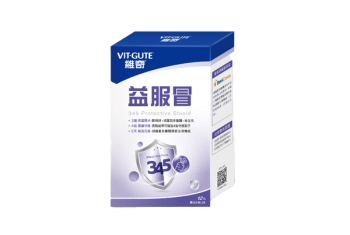
Ingredient Spotlight: Spirulina
A trusted nutritional supplement with newly discovered health benefits and uses
Spirulina is a cyanobacteria, or blue-green microalgae, known by the scientific name Arthrospira. It occurs naturally in warm, alkaline bodies of water throughout the world and has been in the human food chain for thousands of years, having been reported as a food for the Aztec civilization. Today, spirulina is still harvested from natural blooms and used as a food by the Kanembu people of the Lake Chad area in Africa. Spirulina entered the U.S. dietary supplement market in the late 1970s, and it remains a popular green food supplement. In 2003, FDA granted spirulina status as Generally Regarded as Safe (GRAS) for use in foods and beverages, and, just this year, FDA approved the use of the ingredient as a food colorant. Spirulina, for today’s markets, is produced in commercial-scale microalgae farms throughout the world in areas with warm climates. The estimated worldwide annual production of spirulina is 5500 metric tons, with more than 3500 metric tons produced in China, primarily for domestic consumption.
The continued popularity of spirulina as a nutritional supplement is due to the ingredient’s wide variety of valuable nutrients, and to the positive benefits experienced by its consumers. Spirulina contains 60% protein with all essential amino acids, and it is rich in antioxidant carotenoids beta-carotene and zeaxanthin, B vitamins, vitamin K, and dietary minerals. Spirulina contains a blue pigment, phycocyanin, which has been shown to protect both the liver and kidneys from toxins. Very importantly, spirulina contains both immune-stimulating compounds and anti-viral compounds, the most important and effective of which are polysaccharides. In the last 35 years, over 650 studies have been published on potential positive health benefits of spirulina and the nutrients it contains. A review of these studies is well beyond the scope of this paper, however a complete compilation of abstracts on medical research on spirulina is available from the author.
Recent Science
Research on spirulina is still very active. A recent search of PubMeb found 321 technical papers published on the ingredient since 2010. Of these, 101 papers focused on potential health benefits of spirulina and its extracts. Most of the published studies were in vitro and in vivo animal studies, but results of several human clinical studies are of special interest.
A double-blind, placebo-controlled, counter-balanced crossover study conducted in Greece, and published in 2010, examined the ergogenic (physical performance–enhancing) and antioxidant effects of spirulina supplementation in humans. Each of nine moderately trained subjects consumed 6 g of spirulina or placebo daily for four weeks. Spirulina supplementation significantly increased exercise performance and fat oxidation, and it attenuated exercise-induced lipid peroxidation.
A 2011 study conducted in Cameroon examined the potential of spirulina as a nutritional supplement for malnourished, HIV-infected adults. Of 52 patients involved in the study, 26 received spirulina supplements and 26 received soy beans. At the end of 12 weeks, the nutritional status of both groups improved, but subjects receiving spirulina were much more improved compared to subjects receiving soy beans. While the HIV viral load of both groups was similar at the beginning of the study, the spirulina group showed significantly lower viral loading at the end of the study. The authors conclude that further investigations on the antiviral effects of spirulina and its clinical implications are strongly needed.
In a somewhat related study published the same year (and funded by Cyanotech), University of California-Davis researchers examined the effects of Hawaiian spirulina on anemia and immune function in 40 senior citizens. All subjects consumed 3 g of spirulina for 12 weeks daily. At the end of the study, spirulina significantly increased mean corpuscular hemoglobin, white blood cell count, and indoleamine 2,3-dioxygenase (IDO) enzyme activity, an indication of immune function. Researchers concluded that spirulina may ameliorate anemia and immunosenescence in older subjects.
A study published this year demonstrated the hypolipidemic (lipid-lowering) effects of spirulina. This study involved 52 human subjects suffering from dyslipidemia, or high amounts of lipids in the blood. During the three-month study, subjects consumed 1 g of spirulina daily. They were instructed not to modify dietary habits or lifestyle, and to abstain from consuming other supplements or medication. At the end of the study, on average, triglycerides decreased by 16%, LDL cholesterol decreased by 10%, and total cholesterol decreased by 9%. The authors concluded that spirulina has powerful hypolipidemic effects.
Zeaxanthin
Zeaxanthin is a predominate xanthophyll in eyes, and it may reduce the risk of cataracts and age-related macular degeneration. A Chinese study published in 2012 found spirulina to be an effective dietary source of zeaxanthin for humans. The study involved 14 healthy men who received a single dose of 4–5 g of Spirulina containing 2.6–3.7 mg of isotope-labeled zeaxanthin. Serum zeaxanthin levels increased by an average of 250% after a single dose of spirulina, and labeled zeaxanthin from spirulina was detected in subjects for 45 days.
Coloring
Earlier this year, FDA approved spirulina extract for use as a food color. The spirulina extract contains phycocyanin, a vivid blue pigment present in spirulina at 7–10% of its dry weight. Phycocyanin is an accessory pigment, and it serves as a protein storage material, which is why spirulina (and other cyanobacteria) are sometimes called blue-green algae. Phycocyanin from spirulina has been the subject of much research, showing the potential to protect both the liver and kidneys from toxins, as well as neuroprotective properties and other potential health benefits. Phycocyanin-containing spirulina extract is one of the first and only natural blue food colorants approved by FDA. The molecular weight of phycocyanin is quite high, ranging from 70,000 to 110,000. As such, phycocyanin is not particularly stable and subject to degradation if exposed to high temperatures or acidic conditions. The intense blue color provided by phycocyanin, however, is suitable for use in panned, chewy, jelly, gummy, and extruded candies, as well as in chewing gums. In Japan, spirulina is also used to color ice creams, frostings, dairy products, and toothpaste.
Spirulina, used as a food for ages, entered the U.S. dietary supplement market more than 35 years ago. A great deal of research continues to confirm and establish health benefits and new functional uses of this cyanobacteria.
Newsletter
From ingredient science to consumer trends, get the intel you need to stay competitive in the nutrition space—subscribe now to Nutritional Outlook.





